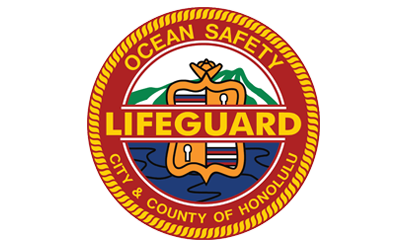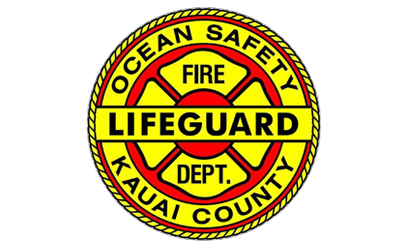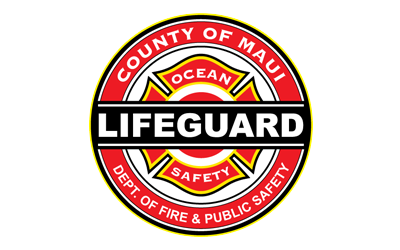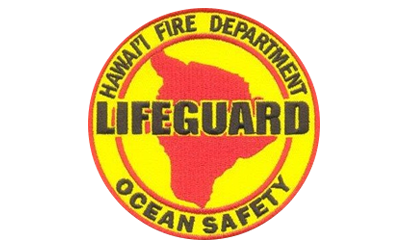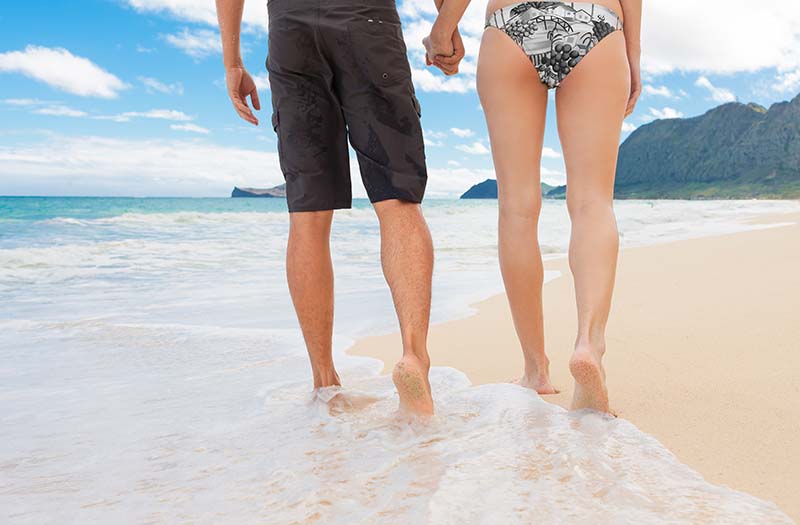
Always stay aware of the water, even when you’re not in the ocean.
KieferPix/Shutterstock.com
When you’re not in the ocean, you still need to be careful near the shoreline. Simply being at the beach puts you at risk, even if you stay in shallow water or don’t intend on getting in the water at all.
Use caution on the sand
Always keep an eye on the waves, shorebreak, and tide levels when walking or sitting on the sand. It’s easy to know that water has recently washed over sand that is wet, but even a dry area on the beach can quickly become washed over by fast rising surf. Powerful shorebreak can also knock you down and pull you into the water.
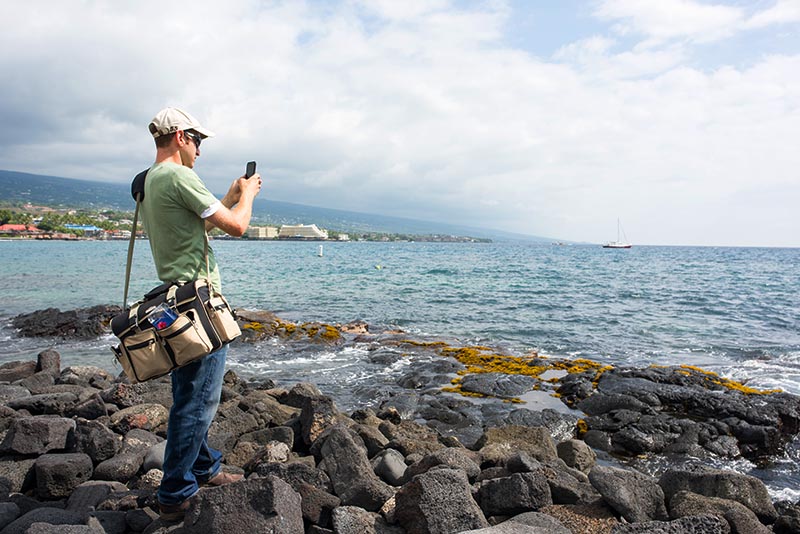
Use caution when taking pictures or selfies near the ocean.
Michael Gordon/Shutterstock.com
Be careful when taking pictures anywhere near the ocean
It can be tempting to capture the moment with a picture or selfie with the ocean behind you. Having your back to the ocean, even briefly, puts you at risk of unexpectedly being hit by a wave. Always use extreme caution and pay attention to ocean activity.
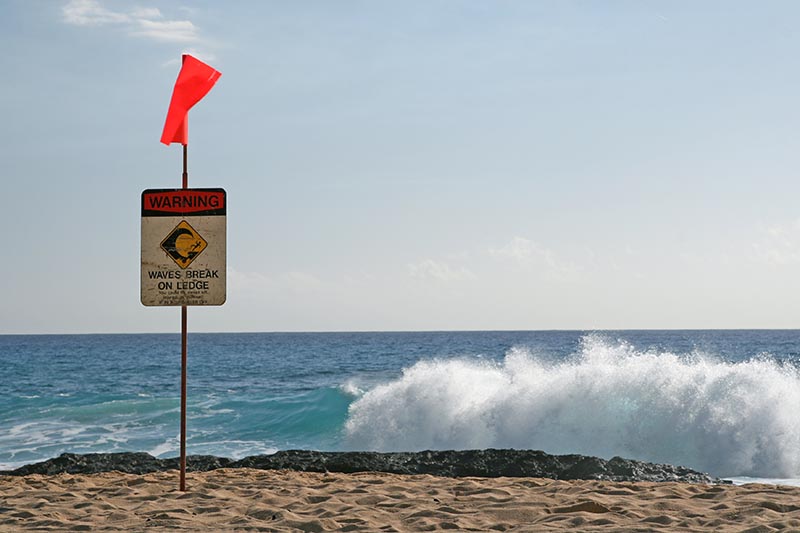
A sign warns beachgoers to be cautious of waves breaking on the ledge.
Henry William Fu/Shutterstock.com
Avoid climbing onto rocks, ledges, cliffs, sea groins, crevices or cavernous areas near the shoreline
These areas can become slippery when they are wet, causing falls or other injury. You could also be hit by a wave, lose your footing and be swept into the ocean.
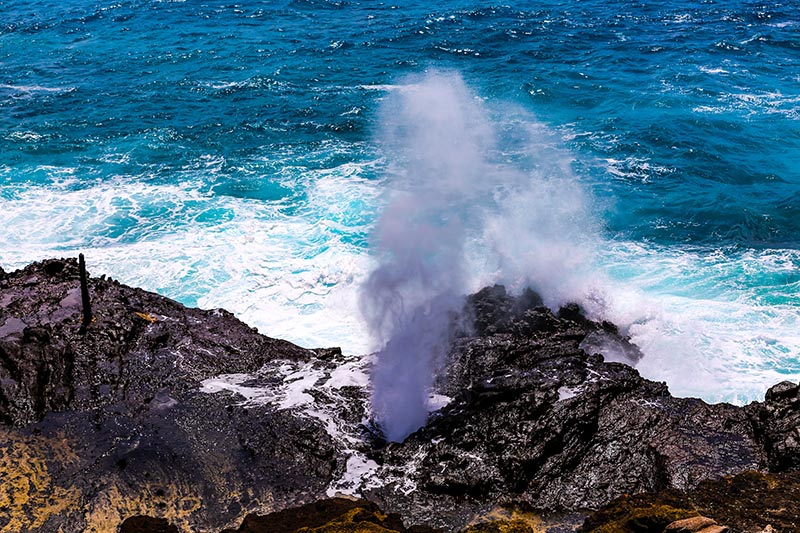
Halona Blowhole at Sandy Beach on Oahu.
Dshumy/Shutterstock.com
Use caution at scenic shoreline lookouts, such as blowholes
Even though the ocean’s edge can seem far away, water can still get to these areas during high surf conditions or through underground blowholes. Be extra careful in areas where the ground is wet and slippery. Follow any posted warning signs and stay out of restricted areas indicated by signs, fences or other barriers.
If you see someone get swept into the ocean, call 911 immediately; do not jump in to rescue them
If the surf is powerful enough to knock someone down and pull them out to sea, conditions are already too dangerous for non-rescue personnel to be in the water. Call 911, calmly describe what happened and your location, then get yourself to a safe area and wait for help to arrive.
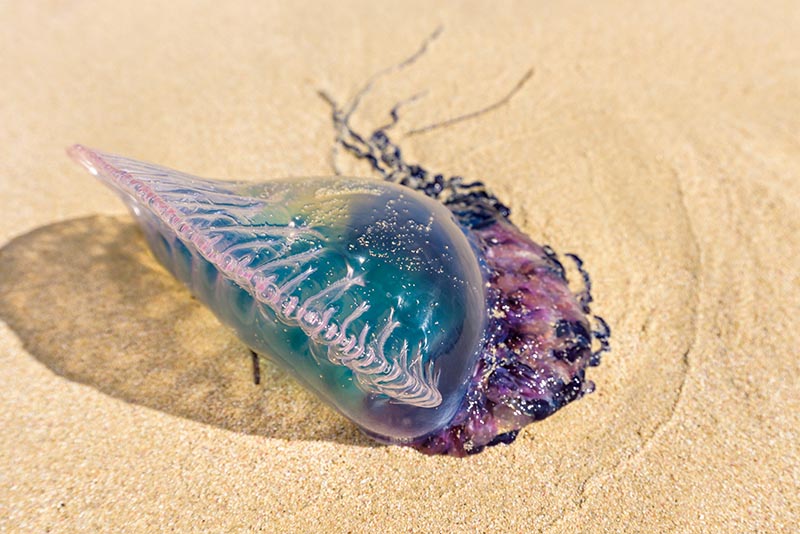
Even a dead Portuguese Man O’War washed up on the beach can still give you a painful sting.
Roberto La Rosa/Shutterstock.com
Beware of jellyfish or other sea creatures that may be on the shore
Box jellyfish and Portuguese Man O’War can still sting you, even when they are washed up on the sand. Keep your distance from other creatures, such as sea turtles and seals, for the safety of both you and the animals.
Remember, many of the tips in the “Safety in the Ocean” section also apply when you’re near the shoreline.



